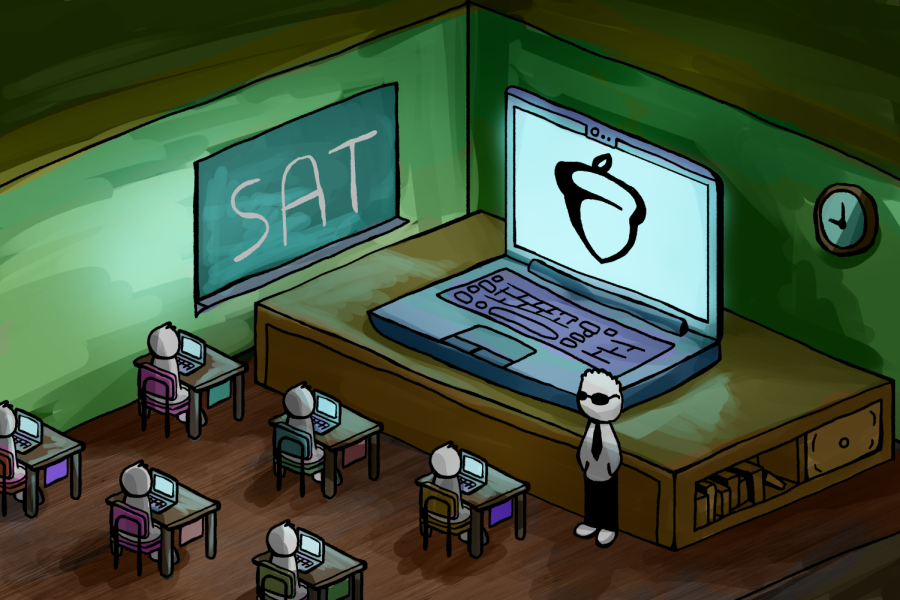College Board sets target for virtual SAT, other changes
The College Board intends to make the digital SAT simple in terms of time and resources by no longer requiring test administrators to pass out equipment and limiting the amount of pre-test instruction given to test-takers.
February 9, 2022
The College Board announced on January 25 that it would administer the SAT virtually, among other changes, as an increasing number of colleges become test-optional.
International students in the graduating class of 2024 will be the first students to take the digital SAT in the spring of 2023. U.S. students in the class of 2025 will be able to take the online test beginning in the spring of 2024.
The PSAT/NMSQT, PSAT 10 and PSAT 8/9 will also be online beginning in the fall 2023.
The online SAT will last 2 hours — an hour less than the current testing time — and reading passages will include only one question per passage, a shift from the current 10–11 questions per passage. A calculator will also be permitted for students to use in both math sections. Currently, students can only use a calculator on one of the two total math sections. The College Board will expect students to use their personal electronic testing device, although devices will be available at testing centers if test-takers do not have access to one.
Students will also receive their scores in days rather than weeks.
Sophomore Ari Tjoervason, who plans to take the SAT during his junior year in 2023, said that if he were able to take a digital version of the test, he would jump at the opportunity.
“The shorter passages and fewer questions will be really helpful time-management wise,” he said. “Shortening the total test time from three to two hours will help with concentration on questions as well.”
The College Board tested a virtual version of the SAT in November of 2021 with students around the world and found that 80% of the students preferred the online test to the on-paper version.
Many students who have finished their SAT testing, including junior Maya Walton, agree that the new format will help alleviate the pressure that many first-time test-takers experience.
“This implementation could really lower students’ stress levels,” Walton said. “Being allowed to bring in your own computer would help with the discomfort a lot of students have mid-test, so it’s definitely something that will have benefits.”
Freshman Charlie Martin, who intends to take the SAT during the spring of his junior year, said he is excited to be among the initial cohort of students who take the digitized SAT.
“I’m all for this change,” he said. “This won’t impact my preparation process either, since the same content will still be tested. I’m looking forward to being able to take it virtually.”











